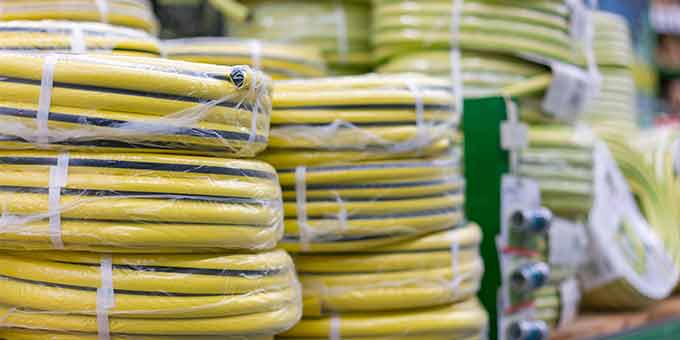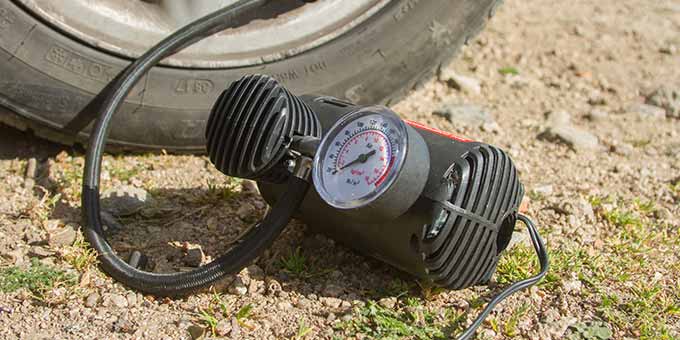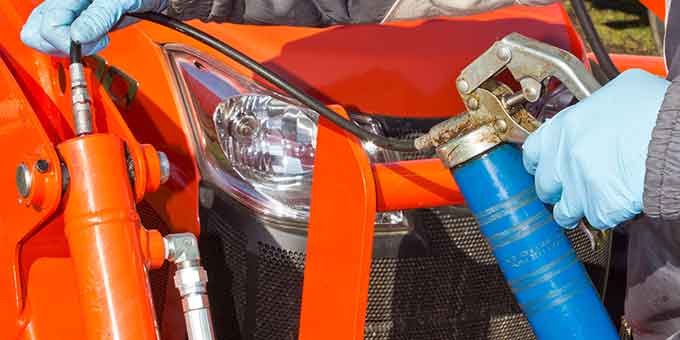An air compressor that compresses air in two stages is referred to as a two-stage air compressor. The air in this compressor is compressed twice. Two-stage air compressors are used where higher pressure is required, as it delivers double the pressure compared to a single-stage compressor.
What Is the Difference Between a Single-stage Compressor and a Two-stage Compressor?
A two-stage air compressor sometimes referred to as rotary screw air compressors, consists of two cylinders, each with its own piston. One piston is used for compressing the air and the other for transferring the compressed air from one cylinder to the next.
The distinguishing factor between single and dual-stage compressors is that a single-stage compressor (also known as a piston compressor) compresses air in a single step. In contrast, two-stage compressors compress the air in two stages.

One-stage Units
A one-stage compressor draws air into the low-pressure cylinder with a piston or engine and compresses it just once at approximately 120 PSI per stroke. This compressed air is then transported to a storage tank. Air in a storage tank is then used to power pneumatic tools and is used for various other small-scale applications.
Two-stage Units
On the other hand, the two-stage air compressor works in the same way, except it performs the compression process twice. It has two cylinders for holding compressed air, and the operation is repeated twice.
Unlike the single-stage unit, the air is not sent to a storage tank after the first compression occurs. Instead, it is transported into a smaller high-pressure cylinder, where a second piston compresses it at roughly 175 PSI. Thereafter, the compressed air passes to a storage tank after it has been cooled, where it is reserved for high-pressure applications.
What Is the Purpose of a Two-stage Compressor?
Because the two-stage air compressor produces pressurized air with a much higher pressure than the pressurized air produced by single-stage compressors, it is used for high-pressure applications. They are also used when continuous use is required, with high performance and lower overall operating costs.
Most assembly factories and production facilities need an air pressure of over 100 PSI to perform their activities. Therefore, these compressors form a vital process tool for manufacturing applications where constant or large-scale operation is required. Two-stage units are able to generate a pressure output of up to 200 PSI, making them perfect for industrial operations.
Industries That Use Multi-stage Units
Multi-stage units are generally employed where large-scale applications are required. Here are some of the places where 2-stage units are often used:
- Textile industries
- Pneumatic operations
- Plastic manufacturing plants
- Petrol pumps
- Chemical and fertilizer industries
- Blowing applications
How Do I Know If My Compressor is a Two-stage Compressor?
Those who are unfamiliar with air compressors may misinterpret the number of cylinders with the type of cylinder. You cannot count the number of cylinders to determine what stage air compressor you have because both single-stage and two-stage air compressors utilize two cylinders to regulate airflow.
Alternatively, you can look at the number of air inlets or cylinder sizes to tell you what kind of air compressor you have. All the cylinders of a single-stage air compressor are the same size, and each has its own inlet valve, whereas, in a two-stage compressor, there is just one inlet valve. Additionally, one piston is smaller than the other, and they are connected by a cooling tube that cools the air before it enters the next stage of compression.
Another way to tell them apart is to look at their size. Single-stage air compressors are typically compact devices that may be readily moved from place to place. On the other hand, two-stage compressors are often much larger and heavier, often forming permanent fixtures where they are used.

The Benefits of Two-stage Air Compressors
Here are some of the benefits of using a two-stage air compressor rather than a single-stage air compressor.
Greater Efficiency, Lower Costs
Because there are more components in a 2-stage air compressor, they are more costly than single-stage compressors. However, the components of a two-stage compressor tend to be smaller, requiring less maintenance than their single-stage counterparts. As a result, the costs of running a two-stage compressor may be lower long-term, so if your requirements are factory scale, a two-stage compressor can also help you save money.
Reduced Condensation
Moisture can cause untimely wear to an air compressor. It can even cause it to fail or explode due to rust that forms when there is moisture build-up. Because 2-stage compressors use chilled air, the moisture content is reduced, resulting in fewer issues related to moisture build-up.
Fewer Problems with Overheating
The two-stage air compressor minimizes the chances of overheating thanks to its inter-stage cooling process, which single-stage units typically do not have. As a result, the odds of untimely mechanical damage, explosions, and the need for maintenance are minimal, which makes these air compressors more reliable and productive than single-stage units.
Built for Ongoing Use
One important difference between single-stage and dual-stage compressors is that the first is designed for infrequent use, while the latter is for continuous use. As a result, the level of dependability is determined by what you intend to do with the compressor.
A single-stage compressor should suffice if you require compressed air to run pneumatic tools or cooking appliances in the kitchen. However, it may not be a dependable contraption if you needed one for continuous use in a factory setting.
More Storage Capacity
Multi-stage compressors tend to have more than one storage tank and are typically larger than single-stage units, which means that they store more trapped air and therefore require less energy to produce compressed air, as these units automatically switch off once they have produced a sufficient amount of air to fill the storage tank. This means that your compressor is likely to cost less to run, thanks to lower energy consumption.
The Disadvantages of a 2-stage Unit
If you are considering a two-stage unit, here are some disadvantages you should know about:
- These devices tend to be more expensive than single-stage units
- They produce a lot of noise
- You may have trouble transporting one, as these units are much heavier
- Maintenance often requires more work
- Installation can be costly
- They require additional cooling units

Is a Two-stage Air Compressor Worth It?
If you are considering purchasing a 2-stage air compressor, you may be wondering if it is worth the extra spend. The reality is that a 2-stage air compressor can save you money in the long run because it is more energy-efficient than a single-stage unit, but this depends on the application.
Suppose you require an air compressor for occasional home use. In that case, spending the extra money on a two-stage unit may not be worth it. However, suppose you require a high-pressure output for large-scale operations. In that case, a 2-stage air compressor is certainly worth your while because it doesn’t just meet your pressure requirements but also operates more reliably and efficiently than single-stage units when used for longer periods.
Again, such equipment is very expensive to buy and can set you back a lot. Furthermore, two-stage units are difficult to carry or transport from one location to another. As a result, they are unsuitable for household use. Additionally, such a high-performance level should not be required for residential applications or use in auto-repair shops. A one-stage air compressor can come in handy here and should be sufficient to complete all small-scale tasks.
What Is a Three-stage Air Compressor?
The air enters the first cylinder and is compressed before passing through an air cooler in a three-stage air compressor. This reduces the amount of heat that has been generated during the compression process, allowing it to approach room temperature.
Thereafter, the air is then passed through a second cylinder, where it is naturally heated as a consequence. After being compressed in the second cylinder, the air passes through another cooler before entering the third phase. It is then compressed to the required pressure, cooled, and delivered to the air tank. The ability to manage the air temperature is the most significant advantage of three-stage units, which leads to a slew of additional benefits. This includes a lower likelihood of mechanical problems and a smaller amount of required effort, allowing you to conserve energy.
Conclusion
Air-powered tools are essential tools for artisans and construction crews alike, irrespective of the size or complexity of a given job. Single-stage units can help you manufacture things faster, better, and more economically if you are an independent carpenter or the proprietor of a crafts line.
Multi-stage air compressor units can be employed to power the most heavy-duty portions of your business if you own a manufacturing plant, offering high performance with lower overall operating costs. Two-stage units tend to be superior when it comes to reliability and performance, but they do come at a cost. Before you purchase your new air compressor, we recommend determining your budget and your PSI and CFM requirements first before making an investment.









